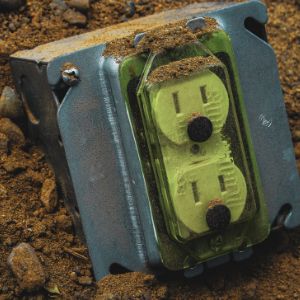3 Simple Ways To Avoid OSHA Violations During Construction
Construction companies can face stiff penalties from OSHA, worker’s comp claims, and employee lawsuits due to an electrical OSHA violation on the job. Electrical incidents are ranked high when it comes to construction industry hazards, with the most severe penalties levied against construction safety oversights that are obvious, willful, and serious. However, many job sites also face plumbing hazards and HVAC openings that can cause accidents.
- Control Of Hazardous Electrical Energy – These are wall openings with electrical shock hazards, unprotected electrical panels, and devices
- Plumbing Hazards – These include trip/fall accidents due to uncovered holes and fall protection.
- HVAC Openings – Openings may refer to uncovered chutes, wall openings, and holes that present a fall danger
To minimize and eliminate electrical shock, tripping or falling risks, or other hazards due to these construction site hazards, consider safety guards and hole covers that can help increase construction safety.
1. OSHA-Approved Hole Covers Are Necessary For Any Jobsite
Fall and trip hazards caused by floor holes and openings are commonly cited OSHA violation issues. Consider strong and durable HDPE (High-Density Polyethylene) plastic hole covers that meet OSHA standards.
Quality is critical for hole covers. They should be fire- and water-resistant and able to withstand harsh construction environments by providing puncture and impact resistance. Choose hole covers rated up to 5000 lb. for rollover protection from man lifts, forklifts, glazing carts, and drywall carts (5000 lb. rated) without breaking or warping.
2. Receptacle Covers Help Prevent Electrical Shocks And Injuries
Exposed wiring is an OSHA violation, and this includes unguarded receptacles that carry over 50 volts of power and are within 8 feet of the walking surface, according to OSHA 1910.303 (g)(2)(i). In addition, accidental contact with the exposed wiring mounted in sheetrock walls can pose an electrocution hazard.
To prevent electrical shock from unguarded energized conductors, consider prefabricated receptacle covers for GFCI devices mounted during sheetrock installation. Those made with a translucent yellow PVC material make it easy to see what device is mounted and at what orientation during early inspections.
3. Acrylic Guards And Panel Covers Can Help You Improve Onsite Safety
One of the most commonly cited OSHA violations and construction safety is the failure to control hazardous energy with lockout/tag-out procedures and other methods. Clear acrylic guards for switches and boxes can help improve your onsite safety practices, protect workers, and allow inspectors to see through.
Acrylic guards also prevent accidental contact with unauthorized personnel walking through construction sites. Choose panel covers and acyclic guards that still feature a key and lock assembly so that you can remain compliant with OSHA’s lockout/tag-out procedures.
SmartGuard Helps You Stay Compliant
Save yourself headaches, down days, and fines by installing our covers and staying OSHA compliant. Visit SmartGuard to view our line of clear covers for electrical devices and openings needed for plumbing and HVAC installations.

